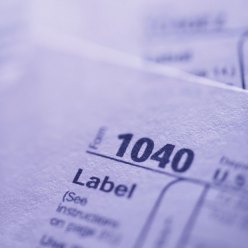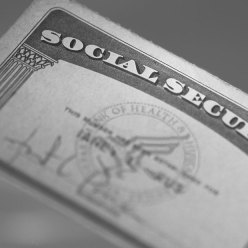IRS Letter Ruling 9405003
The IRS has issued a private letter ruling that provides helpful guidance to churches on a controversial and confusing issue—designated contributions.
The problem. Churches receive a variety of designated contributions during the year. Common examples—contributions that designate a specific project or activity (such as the building fund, or a new van), or a particular missionary, student, or needy family. Are these contributions fully deductible by donors? Should the church issue donors a receipt or list the contributions on the donors’ annual contributions statements? These are questions that many church treasurers have asked.
Background. A religious organization solicits contributions from family members and other interested persons to apply toward the tuition expenses of seminary students. Interested parents and family members send in contributions to the organization on behalf of a designated seminary student, and the organization transfers the funds to the student for his or her seminary expenses (less a nominal administrative fee). Most donors give a certain amount every month for the support of a particular student. Literature published by organization states that:
As with all Christian corporations for which donations qualify for tax-exempt status with the Internal Revenue Service, contributions must be directed to [the organization]. A check should not contain the name of the [student] for whose ministry it is given; instead the student’s name should be designated on the envelope or a separate paper. Although the disposition of all contributions rests with the board of directors, [the organization] honors the donor’s designation whenever possible. If it is not possible, [the organization] notifies the donor about the situation.
The organization’s policy manual states that “because of the nonprofit status of [the organization] the distribution of all contributions rests with the board of directors. However, [the organization] takes donors’ designations into account as a matter of accountability and integrity.”
The organization claimed that donors’ contributions for specified seminary students were fully deductible since the organizations’ board of directors reserved the final authority to distribute all contributed funds.
The IRS ruling. The IRS disagreed, noting that “an individual taxpayer is entitled to a deduction for charitable contributions or gifts to or for the use of qualified charitable organizations, payment of which is made during the taxable year.” It added, “[i]n addition, a gift is not considered a contribution ‘to’ a charity if the facts show that the charity is merely a conduit to a particular person.” The IRS then quoted from a 1962 ruling in which it observed:
If contributions to the fund are earmarked by the donor for a particular individual, they are treated, in effect, as being gifts to the designated individual and are not deductible. However, a deduction will be allowable where it is established that a gift is intended by a donor for the use of the organization and not as a gift to an individual. The test in each case is whether the organization has full control of the donated funds, and discretion as to their use, so as to insure that they will be used to carry out its functions and purposes. In the instant case, the son’s receipt of reimbursements from the fund is alone insufficient to require holding that this test is not met. Accordingly, unless the taxpayer’s contributions to the fund are distinctly marked by him so that they may be used only for his son or are received by the fund pursuant to a commitment or understanding that they will be so used, they may be deducted by the taxpayer in computing his taxable income. Revenue Ruling 62 113.
The IRS concluded that contributions designating seminary students did not satisfy this test:
In the present case, the taxpayers’ contributions to [the organization] were earmarked for the student not only through the use of account numbers which link donors to seminarians, but also by indicating the student’s name on the contribution envelopes. Further, the organization’s literature indicates that it will make every effort to use the contributions as the donor requests “as a matter of accountability and integrity.” These facts indicate that the program is set up so that donors would expect that their contributions will go to the designated seminarian. Thus, the donor reasonably intends to benefit the individual recipient. In addition, taxpayers in this case have stated that they would not have made donations to this particular organization if their son had not been associated with it. Taxpayers’ intended their donations to support their son and expected that their son would receive the contributions they made to the organization. It follows from these facts that the organization does not have full control of the donated funds. Thus, under the standard enunciated by Revenue Ruling 62 113 … the contributions made by taxpayers to the organization are not deductible … because they not only are earmarked but also are received subject to an understanding that the organization will use the funds as the donors designate and because the taxpayers intended to benefit the designated individual rather than the organization.
The IRS rejected the organization’s claim that the parents’ donations were deductible since the organization exercised “control” over their distribution. The IRS observed: “[T]he organization’s statement in their literature that the disposition of all contributions rests with the board of directors is not sufficient to demonstrate control. In fact, the organization in this case refutes its own statement of control by going on to say that it considers designations by donors as a matter of accountability.”
Key point. The IRS concluded that “contributions” on behalf of specific seminary students were not deductible because: (1) the contributions designated a specific student; (2) donors understood that their contributions would benefit the students they designated; and (3) the parents intended to benefit designated children rather than the school. This is a useful test for evaluating the deductibility of contributions to churches and schools that earmark a specific student.
In conclusion, contributions by parents and others that designate a particular student are not deductible even if the school (or other organization) purports to retain full control over the distribution of those contributions. A mere statement that the school exercises control is not enough.
Key point. To be tax-deductible, a charitable contribution must be to (or for the use of) a charitable organization. Contributions that designate a specific project or fund (building fund, new organ) are tax-deductible since they clearly are made to a church.
Missionaries. What is the impact of the IRS ruling on other kinds of designated contributions? Are contributions that designate a specific missionary tax-deductible? What about contributions that designate a needy family? Several courts have ruled that contributions to churches and missions boards that designate a specific missionary will be tax-deductible so long as the church or mission maintains full administrative and accounting control over the donated funds. As the IRS said in its 1962 ruling (quoted above) “[t]he test in each case is whether the organization has full control of the donated funds, and discretion as to their use, so as to insure that they will be used to carry out its functions and purposes.” The IRS acknowledged in its recent ruling such designated missions offerings generally are deductible.
Benevolence funds. What about benevolence funds? Many churches have established benevolence funds and solicit designated contributions with the understanding that the church maintains full control over the distribution of the contributions. The recent IRS ruling makes the deductibility of such designated benevolence contributions more questionable. Recall that the IRS concluded that “contributions” on behalf of specific seminary students were not deductible because: (1) the contributions designated a specific student; (2) donors understood that their contributions would benefit the students they designated; and (3) the parents intended to benefit designated children rather than the school. If this test were applied to designated benevolence contributions, they ordinarily would be non-deductible even if the church claimed to exercise full control over the contributions.
Examples. The relevance of the IRS ruling is illustrated by the following examples.
Example. A church operates a school and charges annual tuition of $2,000. A parent contributes $2,000 to the school’s scholarship fund, and specifies that the contribution be used for his child’s tuition (who attends the school). This “contribution” is not deductible. The church or school should so inform the parent at the time of the contribution, and should decline the check.
Example. Same facts as the previous example, except that the donor is a neighbor rather than the student’s parent. The result is the same.
Example. A church establishes a scholarship fund to assist members who are attending seminary. A parent of a seminary student contributes $5,000 to the fund, with the stipulation that the contribution be applied toward her son’s seminary tuition. Based on the recent IRS ruling, this contribution would not be deductible if the parent understood that her contribution would benefit her son and the parent intended to benefit her son rather than the school (this can be established by asking the donor whether or not she would have contributed to the scholarship fund if her son were not a seminary student).
Example. A taxpayer made a contribution to a college and identified the individual student that he wished to benefit from the funds. The taxpayer stated, “I am aware that a donation to a scholarship fund is only deductible if it is unspecified, however, if in your opinion and that of the authorities, it could be applied to the advantage of Mr. Robert F. Roble, I think it would be constructive.” A federal appeals court held that the intent to benefit a particular person prevented a charitable contribution deduction, even though the person was unrelated to the taxpayer, and the person might have been an appropriate scholarship recipient had the college used its own funds. The IRS referred to this decision in its recent ruling. Tripp v. Commissioner, 337 F.2d 432 (7th Cir. 1964).
Example. A member contributes $2,000 to a scholarship fund. The donor does not designate any student, but rather leaves the distribution of her contribution to the discretion of the school’s scholarship committee. This contribution is tax-deductible.
Example. A member contributes $1,000 to a church building fund. This contribution is tax-deductible since it is to a church rather than to a specific individual.
How church treasurers should respond. What should you do when a member attempts to contribute a check for a specified missionary, student, staff member, or benevolence recipient and you know (on the basis of the above information) that the “contribution” is not tax-deductible? There are a number of alternatives, including the following:
- Simply refuse to accept the check. This is appropriate when the donor does not indicate on the face of the check that it is for the specified recipient (e.g., the designation is made orally or in an accompanying note or letter). The possibility in such cases is that the donor will deduct the “contribution,” and that the IRS would not be able to question the deduction because the check is made payable to the church (without any reference to the designation). In order to prevent such potential abuse it is essential for church treasurers not to accept such checks.
- Accept the check but stamp it “NONDEDUCTIBLE” on its face in red ink. This would prevent the donor from claiming a charitable contribution deduction. Churches that choose this alternative should have an appropriate stamp made by a local printing company.
- Place an asterisk on the contribution summaries provided to church members by all contributions that are not deductible. This alternative is not sufficient, since a donor can substantiate a charitable contribution (of less than $250) with a canceled check. If a donor’s designation does not appear on a check, and the check is accepted by the church and not stamped “NONDEDUCTIBLE,” it is possible for the donor to claim a deduction with little risk of it being disallowed. The church would be contributing to the possibility of an impermissible charitable contribution deduction in such cases by adopting the third alternative.
The effect of a private letter ruling. A private letter ruling is addressed only to the party who requests it, and it is of no legal value in other cases. In fact, it cannot even be cited as precedent in other cases. However, such rulings are issued by the IRS national office and often are viewed as indicators of how the IRS would rule in similar cases.
IRS Offers Further Guidance on Designated Contributions
In another recent pronouncement, the IRS provided the following guidance with regard to charitable contributions designated by donors for earthquake assistance: “The IRS has received questions regarding the tax consequences of private efforts to provide relief to victims of the earthquake [in Los Angeles] including related disasters such as fires resulting from earthquake damage …. Contributions earmarked for Los Angeles earthquake relief that are made to organizations currently recognized by the IRS as tax exempt under section 501(c)(3) of the Internal Revenue Code are fully deductible as charitable contributions. However, the tax law does not allow taxpayers to deduct contributions earmarked for relief of any particular individual or family.” This announcement illustrates an important principle—to be deductible, a charitable contribution must be made to (or for the use of) a charity, and not to a private individual.
This article originally appeared in Church Treasurer Alert, March 1994.
Richard R. Hammar is an attorney, CPA and author specializing in legal and tax issues for churches and clergy.


